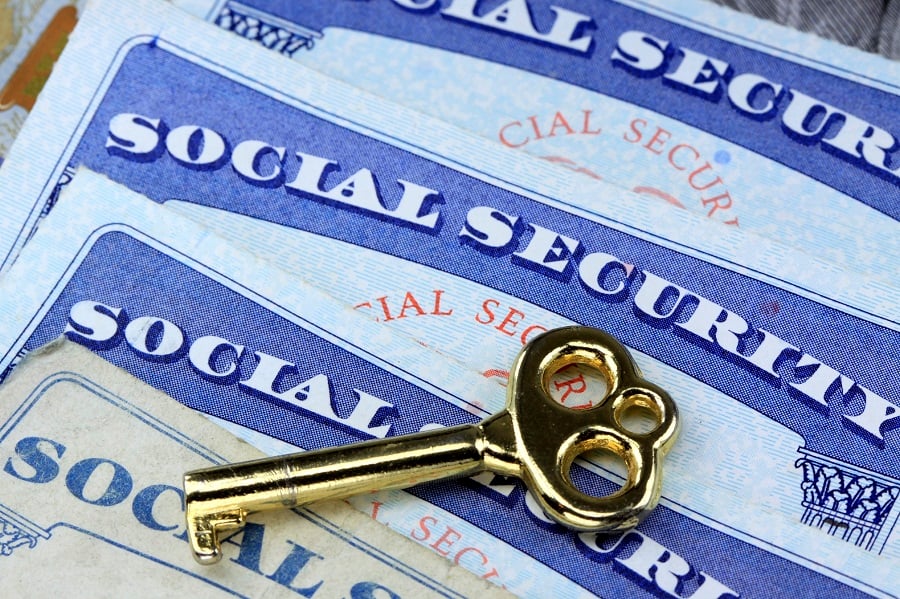The Social Security Administration had added a new security step for users to access their benefit information online. Starting this month, all users will need a text-enabled cell phone number to log into their accounts at
Ssa.gov/myaccount.
From now on, accessing estimated benefits information online will require a two-step authentication process. First, you will enter your username and password. Next, you must enter the one-time security code texted to your cell phone. The code will be valid for 10 minutes.
But on Day One, the process encountered technical difficulties. Verizon Wireless customers were unable to access their personal information on Monday. The agency said it was working to fix the problem.
This multifactor authentication (MFA) procedure has been an optional service available to online users since the agency launched My Social Security in 2012. Now it is mandatory as a result of an executive order that requires all federal agencies to provide more security authentication for online services.
“If you do not have a text-enabled cell phone or you do not wish to provide your cell phone number, you will not be able to access your 'My Social Security' account,” the agency said in a statement sent to the nearly 26 million people who have signed up for online access to their benefits information “This is our first step in adding security, and we expect future enhancements will provide other options.”
Mary Johnson, a policy consultant with The Senior Citizens League, an advocacy group in Alexandria, Va., expressed concern that the change may prevent a significant number of people who live in areas with unreliable cell phone service from accessing their online accounts.
“[The Senior Citizens League] feels that online security is vital, but feels alternate options should be offered,” Ms. Johnson said. “Based on what we know at the moment, the alternative to checking online is either calling SSA's 1-800-772-1213 line, or trekking out to a local Social Security office where you take a number and wait in line.”
Think of it as one more step towards automation and one more step away from personal customer service that had been the hallmark of the Social Security Administration for most of its 80-year existence. Customer satisfaction has been declining as the result of budget cuts, forcing the agency to do more with less just as the baby boomer generation reached retirement age.
More than 59 million retirees, disabled workers, survivors and their families receive Social Security benefits each year — a number that has grown by 6 million in just the past five years.
I hear from
InvestmentNews readers all the time complaining about the incorrect information their clients have received from the local Social Security office. “Not only did Social Security give several clients wrong information, one client had to go to three different offices to find someone that had ever even heard of file and suspend,” one adviser said.
Now that the file-and-suspend claiming option has been eliminated — except for those who were at least 66 years old and who filed by the April 29, 2016, deadline — there is one less thing to get wrong. But so many important decisions remain. It underscores why financial advisers should have a basic understanding of Social Security rules to help guide their clients' claiming decisions before they apply for benefits. Those who can apply for benefits online, should.
The SSA's nation toll-free telephone number serves as the gateway to the agency's services, fielding 37 million calls in 2015. Trained agents at 27 teleservice centers provide services such as answering questions about SSA's programs, taking claims for retirement benefits and setting up appointments.
“When the teleservice centers are adequately funded and staffed, SSA's 800 number performs well,” the Center on Budget and Policy Priorities, a nonpartisan research group in Washington, D.C., focusing on budget and tax issues, said in a recent report. But starting in 2011, budget cuts forced SSA to freeze hiring and the teleservice centers lost many agents through attrition.
In just three years, SSA lost more than 15% of its 800-number staff, the report said. Wait times and busy rates spiked. After a small funding increase in 2014 enabled SSA to replace some of the agents lost during the hiring freeze, service began to rebound — though it remains well below previous levels. “In 2016, the average caller to SSA's 800 number can expect to spend over 15 minutes on hold and nearly 10% of callers will receive a busy signal,” the report said.
Field office operations have also suffered. The agency closed 64 field offices and 533 mobile offices since 2010 and reduced hours at remaining offices. “Before the budget cuts, more than 90% of applicants could schedule an appointment within three weeks,” the report said. “By 2015, fewer than half could.”
The future doesn't look much better. “Our current state of service remains fragile,” acting commissioner Carolyn Colvin said in her message to Congress on the agency's budget request for fiscal year 2017. Congress has not yet approved appropriation bills for the new fiscal year that begins Oct. 1.
(Questions about new Social Security rules? Find the answers in my new ebook.)
Mary Beth Franklin is a contributing editor to InvestmentNews
and a certified financial planner.







